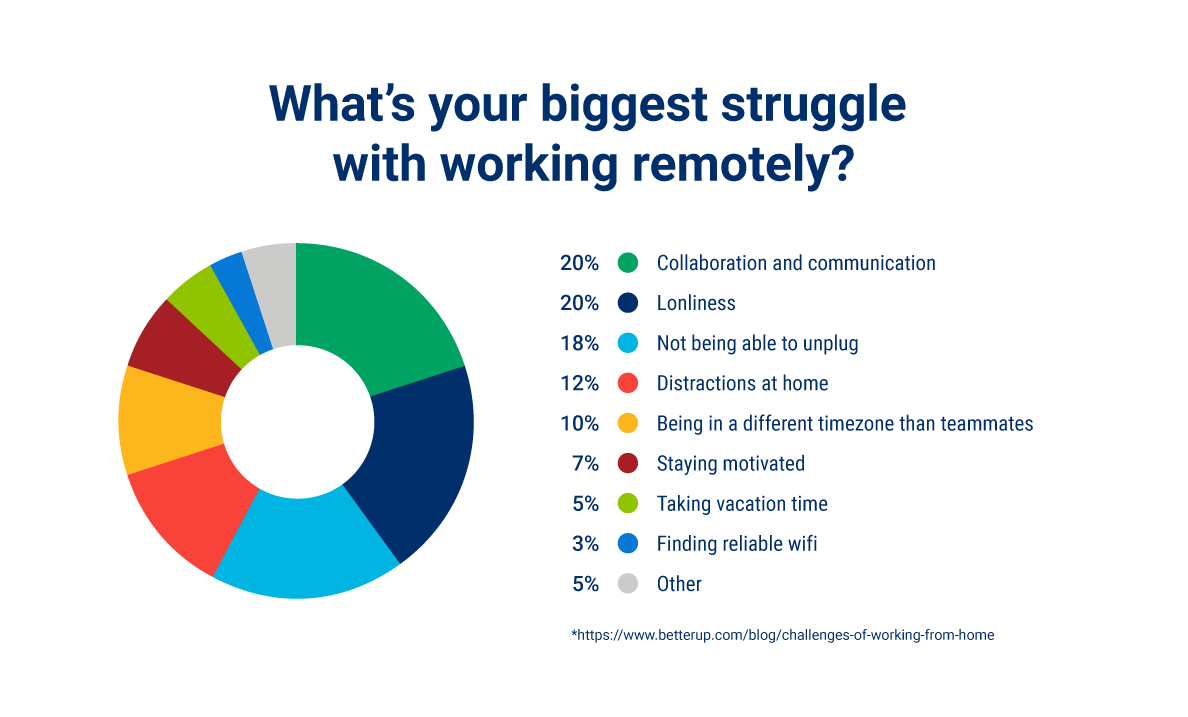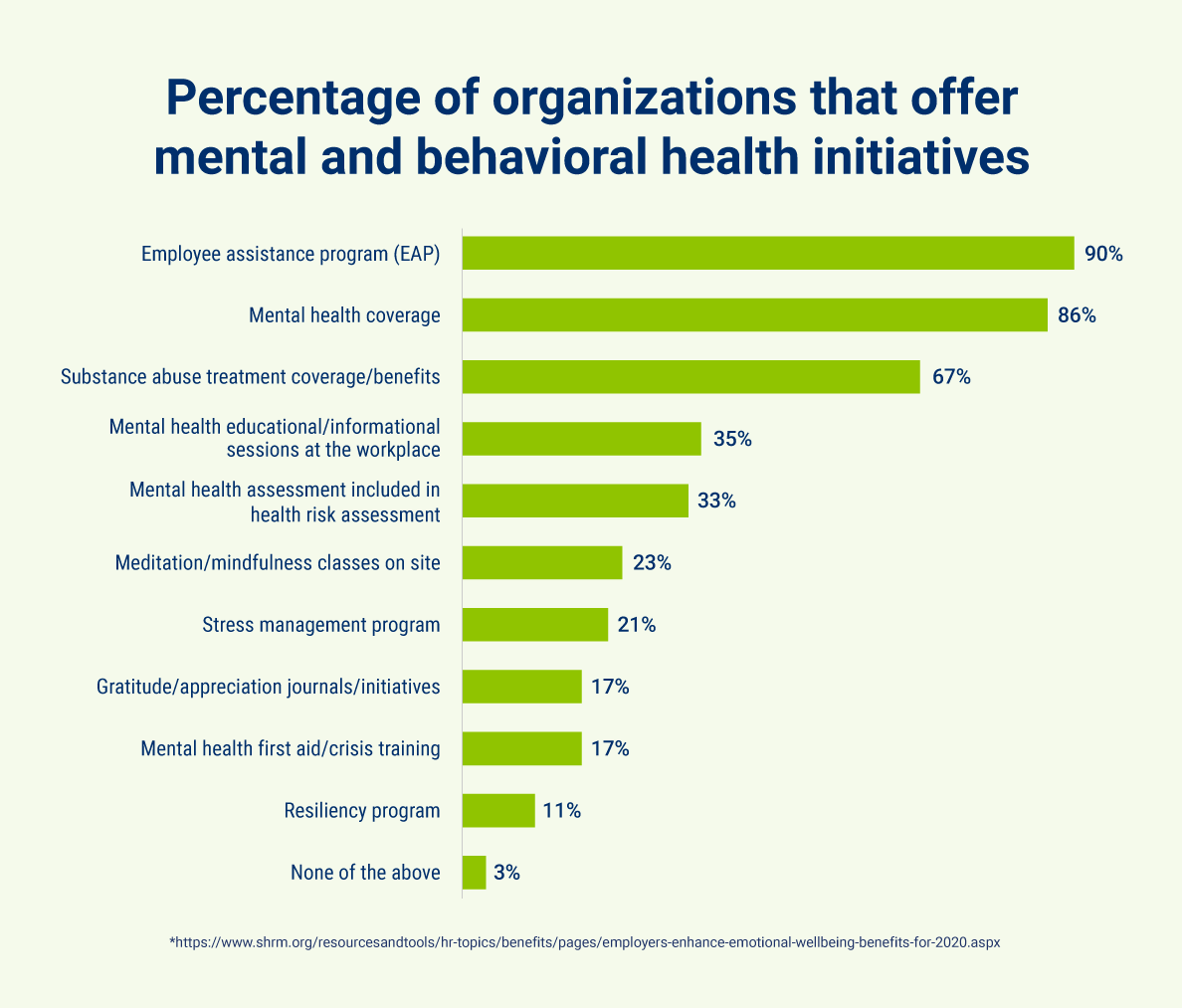The pandemic has shifted the work environment from the standard in-person workspace to the makeshift workspace at home, where workers connect with one another virtually. As working remotely has become the new normal for employees, the challenges of working from home have become evident over the past few years. Background distractions and technology failures are commonplace – but the effects remote work environments can have on an employee’s mental health, and even the health of their family, are uncharted territory for most workforces.
For businesses to build on the increased productivity and work/life balance that working remotely can provide, it’s critical to address the challenges that can hinder or eliminate those benefits. That mission begins with addressing social and mental health within the workforce.

A study by OnePoll on behalf of Volley surveyed 2,000 workers-from-home in the U.S. and found that:
- Seven in 10 employees who work from home feel more isolated compared to being in the office.
- With the absence of in-person events, 63% felt less engaged with their team, as the average employee felt disconnected by August 2020.
Human Resource leaders and executives are the first line of defense for the mental well-being of a workforce. It’s important to have conversations with colleagues around mental health and create a culture where vulnerability is accepted and met with the appropriate support.
Resources
As mental health discussions are becoming more frequent in work cultures, Human Resources and leaders can use training, support, and resources to understand, be aware of, and support employees’ mental health needs.

Programs
Well-being benefits are an essential part of any employer’s health plan. As an employer, you can incorporate annual or quarterly workshops on emotional resilience into your organization’s foundation. Local institutions, such as Sheppard Pratt, are another outlet to consider partnering with for direct-to-employer mental health services that meet your employees’ needs. They can provide resources such as mental health self-assessments, mental health webinars, mental health first aid, and mental health fitness challenges. Programs are also available in the market that can monitor and reduce stress levels. Apps and websites can support well-being by tracking an individual’s sleep and relaxation.
Apps & Websites
Happify is a mood training mental health app that teaches resiliency through gamification.
Calm is an app that supports sleep and meditation with offerings like guided meditation and sleep stories.
Headspace is another popular resource to consider to help employees live a healthier, more well-rested life.
Employee Benefits
Employee assistance programs (EAPs) are crucial for employee benefits, offering counseling, referrals, and follow-up services to employees and their immediate family members. EAPs can provide direct access for individuals to mental health professionals via phone or in-person appointments. Telehealth programs are another option for mental health counseling.
It is crucial to note the Mental Health Parity and Addiction Equity Act requires insurance coverage for mental health conditions, including substance use disorders, to be no more restrictive than insurance coverage for other medical conditions. HR should know how many certified mental health professionals are in-network to avoid plans that offer misleading mental health coverage.
As new solutions to addressing mental health issues evolve, it’s important to make sure your mental health benefits support employees along every stage of the mental health spectrum, with particular emphasis on early and preventative support. While mental health impacts individuals differently, it’s crucial to have all bases of support covered, both short-term and long-term. Creating a culture that supports mental health won’t happen overnight, but implementing and exploring these resources can be a step in the right direction for your employees and their well-being benefits.
Sources
Eatough, E. (2021, May 17). Smarter ways to work from home: 12 challenges and how to overcome them. BetterUp. Retrieved May 24, 2022, from https://www.betterup.com/blog/challenges-of-working-from-home
Miller, S. (2019, October 28). Employers enhance emotional and mental health benefits for 2020. SHRM. Retrieved May 24, 2022, from https://www.shrm.org/resourcesandtools/hr-topics/benefits/pages/employers-enhance-emotional-wellbeing-benefits-for-2020.aspx
Rawe, J. (n.d.). Workplace Mental Health: 5 ways to support employee wellness. Understood. Retrieved May 24, 2022, from https://www.understood.org/en/articles/workplace-mental-health-5-ways-to-support-employee-wellness
Sheppard Pratt Direct: Care finder. Sheppard Pratt. (n.d.). Retrieved May 24, 2022, from https://www.sheppardpratt.org/care-finder/sheppard-pratt-direct/
Wooldridge, S. (2022, April 27). A new framework: Mental health benefits in the post-pandemic workplace. BenefitsPRO. Retrieved May 24, 2022, from https://www.benefitspro.com/2022/04/27/a-new-framework-mental-health-benefits-in-the-post-pandemic-workplace/




